Cuminaldehyde Effects in a MIA-Induced Experimental Model Osteoarthritis in Rat Knees
Abstract
1. Introduction
2. Materials and Methods
2.1. Cuminaldehyde
2.2. Animals and Ethics Aspects
2.3. Experimental Design
2.4. In Vivo Clinical Assessments
2.4.1. Evaluation of Motor Activity/Forced Deambulation (Rotarod Test)
2.4.2. Incapacitation/Weight Distribution Test on Hind Legs (Weight Bearing)
2.4.3. Mouse Grimace Scale (MGS)
2.5. Radiographical Analysis
2.6. Histopathological Analysis
2.7. Cytokines Evaluations
2.8. In Vitro Activity on Cyclooxygenase
2.9. In Silico Assay
2.9.1. Structures of the Compounds
2.9.2. Target Structures
2.9.3. Molecular Docking
2.10. Statistical Analysis
3. Results
3.1. Motor Activity/Forced Deambulation (Rotarod Test) Evaluation
3.2. Incapacitation/Weight Distribution Test on Hind Legs (Weight Bearing)
3.3. Rating by Mouse Grimace Scale
3.4. Radiographic Analysis
3.5. Histopathological Analysis
3.6. Cytokine Analysis
3.7. Inhibition of Cyclooxygenase 1 and 2
3.8. Molecular Docking
4. Discussion
5. Conclusions
Author Contributions
Funding
Institutional Review Board Statement
Informed Consent Statement
Data Availability Statement
Acknowledgments
Conflicts of Interest
References
- Glyn-Jones, S.; Palmer, A.J.R.; Agricola, R.; Price, A.J.; Vincent, T.L.; Weinans, H.; Carr, A.J. Osteoarthritis. Lancet 2015, 386, 376–387. [Google Scholar] [CrossRef] [PubMed]
- Sharma, L.; Kapoor, D.; Issa, S. Epidemiology of Osteoarthritis: An Update. Curr. Opin. Rheumatol. 2006, 18, 147–156. [Google Scholar] [CrossRef] [PubMed]
- De Rosis, R.G.; Kairalla, M. Osteoartrite: Avaliação Clínica e Epidemiológica de Pacientes Idosos Em Instituição de Longa Permanência. Rev. Soc. Bras. Clin. Med. 2010, 8, 101–108. [Google Scholar]
- Kawano, M.M.; Araújo, I.L.A.; Castro, M.C.; Matos, M.A. Assessment of Quality of Life in Patients with Knee Osteoarthritis. Acta Ortop. Bras. 2015, 23, 307–310. [Google Scholar] [CrossRef]
- Uthman, O.A.; van der Windt, D.A.; Jordan, J.L.; Dziedzic, K.S.; Healey, E.L.; Peat, G.M.; Foster, N.E. Exercise for Lower Limb Osteoarthritis: Systematic Review Incorporating Trial Sequential Analysis and Network Meta-Analysis. BMJ 2013, 347, f5555. [Google Scholar] [CrossRef]
- Neogi, T.; Zhang, Y. Epidemiology of Osteoarthritis. Rheum. Dis. Clin. N. Am. 2013, 39, 355–369. [Google Scholar] [CrossRef]
- Haseeb, A.; Haqqi, T.M. Immunopathogenesis of Osteoarthritis. Clin. Immunol. 2013, 146, 185–196. [Google Scholar] [CrossRef]
- Robinson, W.H.; Lepus, C.M.; Wang, Q.; Raghu, H.; Mao, R.; Lindstrom, T.M.; Sokolove, J. Low-Grade Inflammation as a Key Mediator of the Pathogenesis of Osteoarthritis. Nat. Rev. Rheumatol. 2016, 12, 580–592. [Google Scholar] [CrossRef]
- Woodell-May, J.E.; Sommerfeld, S.D. Role of Inflammation and the Immune System in the Progression of Osteoarthritis. J. Orthop. Res. 2020, 38, 253–257. [Google Scholar] [CrossRef]
- O’Neill, T.W.; McCabe, P.S.; McBeth, J. Update on the Epidemiology, Risk Factors and Disease Outcomes of Osteoarthritis. Best Pract. Res. Clin. Rheumatol. 2018, 32, 312–326. [Google Scholar] [CrossRef]
- Singh, P.; Marcu, K.B.; Goldring, M.B.; Otero, M. Phenotypic Instability of Chondrocytes in Osteoarthritis: On a Path to Hypertrophy. Ann. N. Y. Acad. Sci. 2019, 1442, 17–34. [Google Scholar] [CrossRef]
- Nielsen, O.H.; Ainsworth, M.; Csillag, C.; Rask-Madsen, J. Systematic Review: Coxibs, Non-Steroidal Anti-Inflammatory Drugs or No Cyclooxygenase Inhibitors in Gastroenterological High-Risk Patients? Aliment. Pharmacol. Ther. 2006, 23, 27–33. [Google Scholar] [CrossRef]
- Yu, S.P.; Hunter, D.J. Managing Osteoarthritis. Aust. Prescr. 2015, 38, 115–119. [Google Scholar] [CrossRef]
- Atiquzzaman, M.; Karim, M.E.; Kopec, J.; Wong, H.; Anis, A.H. Role of Nonsteroidal Antiinflammatory Drugs in the Association Between Osteoarthritis and Cardiovascular Diseases: A Longitudinal Study. Arthritis Rheumatol. 2019, 71, 1835–1843. [Google Scholar] [CrossRef]
- Sarmento-Neto, J.; do Nascimento, L.; Felipe, C.; de Sousa, D. Analgesic Potential of Essential Oils. Molecules 2015, 21, 20. [Google Scholar] [CrossRef]
- Vieira, J.N. Candida spp. in the Oral Cavity of Hospitalized and Non-Hospitalized Individuals and Antifungal Action of Essential Oils on Isolates of Chronic Atrophic Candidiasis. Ph.D. Thesis, Institute of Biology, Federal University of Pelotas, Pelotas, Brazil, 2016. [Google Scholar]
- Koohsari, S.; Sheikholeslami, M.A.; Parvardeh, S.; Ghafghazi, S.; Samadi, S.; Poul, Y.K.; Pouriran, R.; Amiri, S. Antinociceptive and Antineuropathic Effects of Cuminaldehyde, the Major Constituent of Cuminum Cyminum Seeds: Possible Mechanisms of Action. J. Ethnopharmacol. 2020, 255, 112786. [Google Scholar] [CrossRef]
- Wei, J.; Zhang, X.; Bi, Y.; Miao, R.; Zhang, Z.; Su, H. Anti-Inflammatory Effects of Cumin Essential Oil by Blocking JNK, ERK, and NF- κ B Signaling Pathways in LPS-Stimulated RAW 264.7 Cells. Evid. Based Complement. Altern. Med. 2015, 2015, 474509. [Google Scholar] [CrossRef]
- Kalff, K.-M.; El Mouedden, M.; van Egmond, J.; Veening, J.; Joosten, L.; Scheffer, G.J.; Meert, T.; Vissers, K. Pre-Treatment with Capsaicin in a Rat Osteoarthritis Model Reduces the Symptoms of Pain and Bone Damage Induced by Monosodium Iodoacetate. Eur. J. Pharmacol. 2010, 641, 108–113. [Google Scholar] [CrossRef]
- Schött, E.; Berge, O.-G.; Ängeby-Möller, K.; Hammarström, G.; Dalsgaard, C.-J.; Brodin, E. Weight Bearing as an Objective Measure of Arthritic Pain in the Rat. J. Pharmacol. Toxicol. Methods 1994, 31, 79–83. [Google Scholar] [CrossRef]
- Sotocina, S.G.; Sorge, R.E.; Zaloum, A.; Tuttle, A.H.; Martin, L.J.; Wieskopf, J.S.; Mapplebeck, J.C.; Wei, P.; Zhan, S.; Zhang, S.; et al. The Rat Grimace Scale: A Partially Automated Method for Quantifying Pain in the Laboratory Rat via Facial Expressions. Mol. Pain 2011, 7, 55. [Google Scholar] [CrossRef]
- Gundogdu, G.; Demirkaya Miloglu, F.; Gundogdu, K.; Tasci, S.Y.; Albayrak, M.; Demirci, T.; Cetin, M. Investigation of the Efficacy of Daidzein in Experimental Knee Osteoarthritis-Induced with Monosodium Iodoacetate in Rats. Clin. Rheumatol. 2020, 39, 2399–2408. [Google Scholar] [CrossRef] [PubMed]
- Pritzker, K.P.H.; Gay, S.; Jimenez, S.A.; Ostergaard, K.; Pelletier, J.-P.; Revell, P.A.; Salter, D.; van den Berg, W.B. Osteoarthritis Cartilage Histopathology: Grading and Staging. Osteoarthr. Cartil. 2006, 14, 13–29. [Google Scholar] [CrossRef] [PubMed]
- Dennington, R.; Keith, T.A.; Millam, J.M. GaussView5; NFI CO., LTD.: Taiwan, China, 2016. [Google Scholar]
- Frisch, M.J.; Trucks, G.W.; Schlegel, H.B.; Scuseria, G.E.; Robb, M.A.; Cheeseman, J.R.; Scalmani, G.; Barone, V.; Petersson, G.A.; Nakatsuji, H.; et al. Gaussian˜16 {R}evision {C}.01 2016; Gaussian, Inc.: Wallingford, CT, USA, 2016. [Google Scholar]
- Trott, O.; Olson, A.J. AutoDock Vina: Improving the Speed and Accuracy of Docking with a New Scoring Function, Efficient Optimization, and Multithreading. J. Comput. Chem. 2009, 31, 455–461. [Google Scholar] [CrossRef] [PubMed]
- Morris, G.M.; Goodsell, D.S.; Halliday, R.S.; Huey, R.; Hart, W.E.; Belew, R.K.; Olson, A.J. AutoDock-Related Material Automated Docking Using a Lamarckian Genetic Algorithm and an Empirical Binding Free Energy Function. Comput. Chem. J. Comput. Chem. 1998, 28, 1145–1152. [Google Scholar] [CrossRef]
- Guo, N.; Tong, T.; Ren, N.; Tu, Y.; Li, B. Saponins from Seeds of Genus Camellia: Phytochemistry and Bioactivity. Phytochemistry 2018, 149, 42–55. [Google Scholar] [CrossRef]
- Pettersen, E.F.; Goddard, T.D.; Huang, C.C.; Couch, G.S.; Greenblatt, D.M.; Meng, E.C.; Ferrin, T.E. UCSF Chimera?A Visualization System for Exploratory Research and Analysis. J. Comput. Chem. 2004, 25, 1605–1612. [Google Scholar] [CrossRef]
- Stierand, K.; Maass, P.C.; Rarey, M. Molecular Complexes at a Glance: Automated Generation of Two-Dimensional Complex Diagrams. Bioinformatics 2006, 22, 1710–1716. [Google Scholar] [CrossRef]
- Schuelert, N.; McDougall, J.J. Grading of Monosodium Iodoacetate-Induced Osteoarthritis Reveals a Concentration-Dependent Sensitization of Nociceptors in the Knee Joint of the Rat. Neurosci. Lett. 2009, 465, 184–188. [Google Scholar] [CrossRef]
- de Morais, S.V.; Czeczko, N.G.; Malafaia, O.; Ribas, J.M.; Garcia, J.B.S.; Miguel, M.T.; Zini, C.; Massignan, A.G. Osteoarthritis Model Induced by Intra-Articular Monosodium Iodoacetate in Rats Knee. Acta Cir. Bras. 2016, 31, 765–773. [Google Scholar] [CrossRef]
- Jordt, S.-E.; Bautista, D.M.; Chuang, H.; McKemy, D.D.; Zygmunt, P.M.; Högestätt, E.D.; Meng, I.D.; Julius, D. Mustard Oils and Cannabinoids Excite Sensory Nerve Fibres through the TRP Channel ANKTM1. Nature 2004, 427, 260–265. [Google Scholar] [CrossRef]
- Karashima, Y.; Talavera, K.; Everaerts, W.; Janssens, A.; Kwan, K.Y.; Vennekens, R.; Nilius, B.; Voets, T. TRPA1 Acts as a Cold Sensor in vitro and in vivo. Proc. Natl. Acad. Sci. USA 2009, 106, 1273–1278. [Google Scholar] [CrossRef]
- Legrand, C.; Merlini, J.M.; de Senarclens-Bezençon, C.; Michlig, S. New Natural Agonists of the Transient Receptor Potential Ankyrin 1 (TRPA1) Channel. Sci. Rep. 2020, 10, 11238. [Google Scholar] [CrossRef]
- Vasconcelos, C.C.; Lopes, A.J.O.; de Jesus Garcia Ataide, E.; Carvalho, K.W.P.; de Brito, M.F.F.; Rodrigues, M.S.; de Morais, S.V.; Silva, G.E.B.; da Rocha, C.Q.; Garcia, J.B.S.; et al. Arrabidaea Chica Verlot Fractions Reduce MIA-Induced Osteoarthritis Progression in Rat Knees. Inflammopharmacology 2021, 29, 735–752. [Google Scholar] [CrossRef]
- Bhatia, D.; Bejarano, T.; Novo, M. Current Interventions in the Management of Knee Osteoarthritis. J. Pharm. Bioallied Sci. 2013, 5, 30. [Google Scholar] [CrossRef]
- Lima, M.V.V.; Freire, A.O.; Sousa, E.L.F.; Vale, A.A.M.; Lopes, A.J.O.; Vasconcelos, C.C.; Lima-Aragão, M.V.V.; Serra, H.O.; Liberio, R.N.M.G.; Santos, A.P.S.A.; et al. Therapeutic Use of Scoparia Dulcis Reduces the Progression of Experimental Osteoarthritis. Molecules 2019, 24, 3474. [Google Scholar] [CrossRef]
- Leung, V.S.Y.; Benoit-Biancamano, M.-O.; Pang, D.S.J. Performance of Behavioral Assays: The Rat Grimace Scale, Burrowing Activity and a Composite Behavior Score to Identify Visceral Pain in an Acute and Chronic Colitis Model. PAIN Rep. 2019, 4, e718. [Google Scholar] [CrossRef]
- Ahlbäck, S. Osteoarthrosis of the Knee. A Radiographic Investigation. Acta Radiol. Diagn. 1968, 93 (Suppl. S277), 7–72. [Google Scholar]
- Stewart, H.L.; Kawcak, C.E. The Importance of Subchondral Bone in the Pathophysiology of Osteoarthritis. Front. Vet. Sci. 2018, 5, 178. [Google Scholar] [CrossRef]
- Molnar, V.; Matišić, V.; Kodvanj, I.; Bjelica, R.; Jeleč, Ž.; Hudetz, D.; Rod, E.; Čukelj, F.; Vrdoljak, T.; Vidović, D.; et al. Cytokines and Chemokines Involved in Osteoarthritis Pathogenesis. Int. J. Mol. Sci. 2021, 22, 9208. [Google Scholar] [CrossRef]
- Scanzello, C.R. Chemokines and Inflammation in Osteoarthritis: Insights from Patients and Animal Models. J. Orthop. Res. 2017, 35, 735–739. [Google Scholar] [CrossRef]
- Kraychete, D.C.; Calasans, M.T.d.A.; Valente, C.M.L. Citocinas Pró-Inflamatórias e Dor. Rev. Bras. Reumatol. 2006, 46, 199–206. [Google Scholar] [CrossRef]
- Tomy, M.J.; Dileep, K.V.; Prasanth, S.; Preethidan, D.S.; Sabu, A.; Sadasivan, C.; Haridas, M. Cuminaldehyde as a Lipoxygenase Inhibitor: In vitro and In silico Validation. Appl. Biochem. Biotechnol. 2014, 174, 388–397. [Google Scholar] [CrossRef] [PubMed]
- de Morais, B.S.; Silva, Y.P.; Cruvinel, M.G.C.; de Castro, C.H.V.; Hermeto, M.V. Administração Inadvertida de 4 Mg de Morfina Por via Subaracnóidea: Relato de Caso. Rev. Bras. Anestesiol. 2008, 58, 160–164. [Google Scholar] [CrossRef] [PubMed]
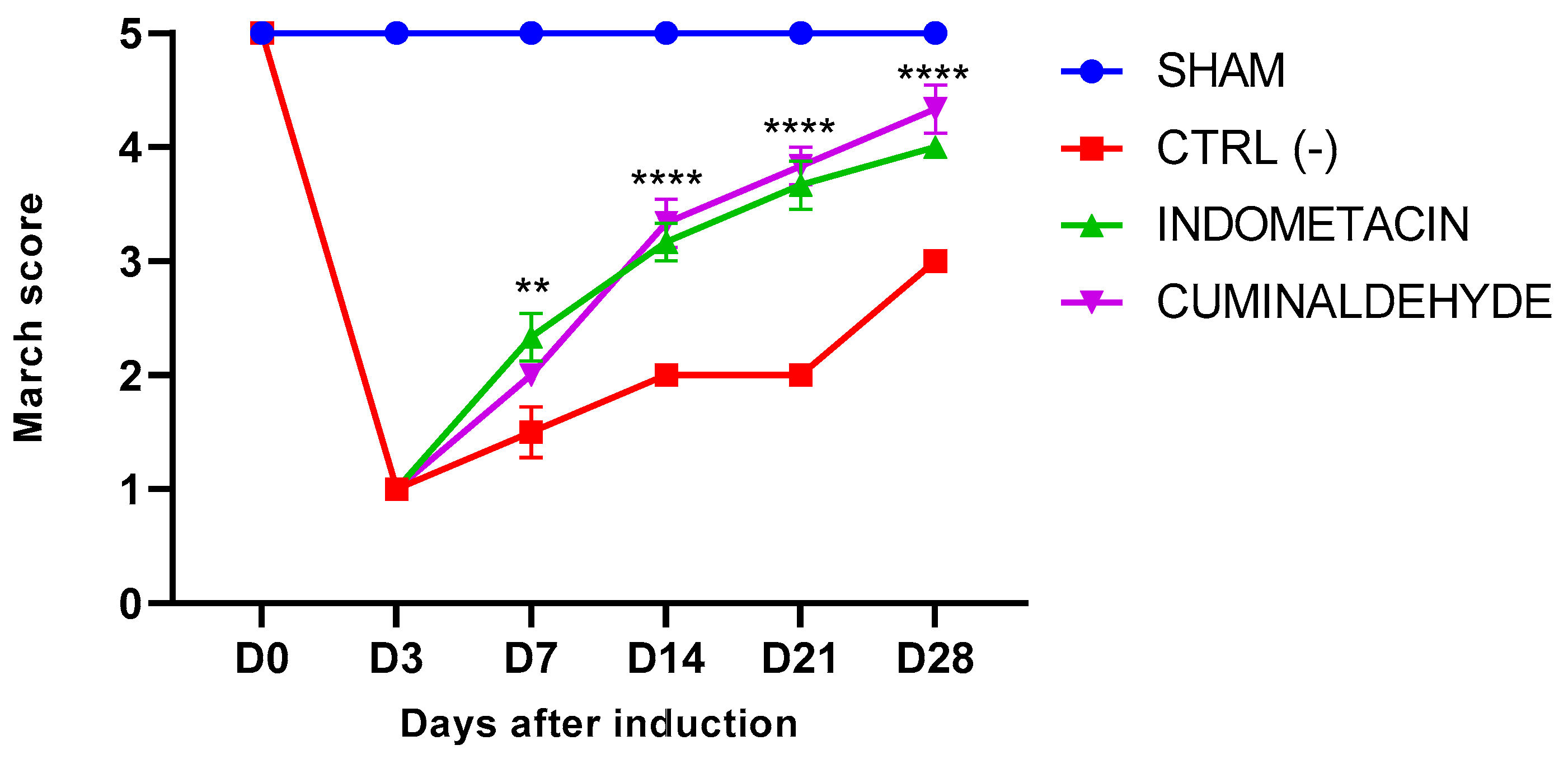
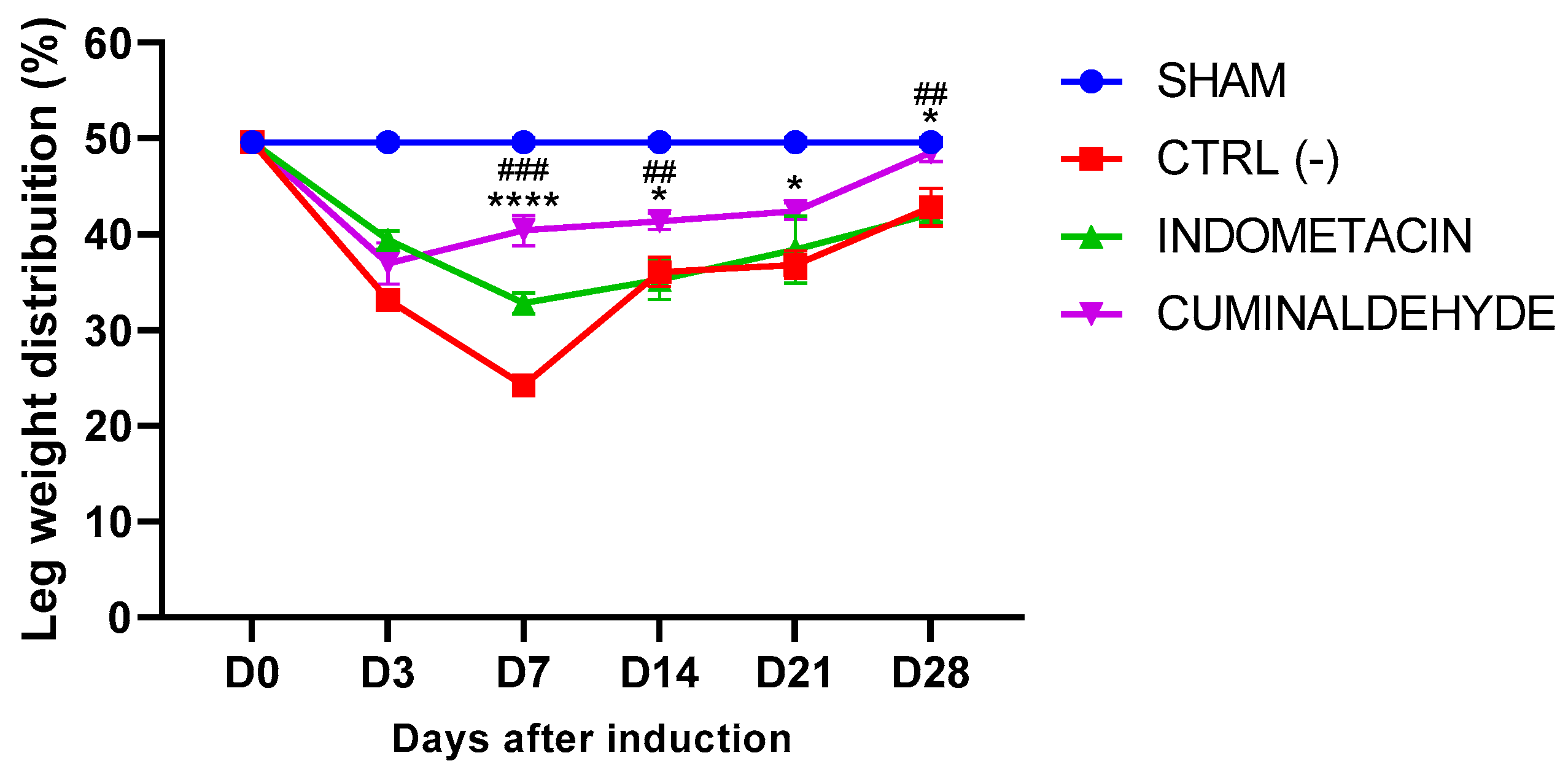

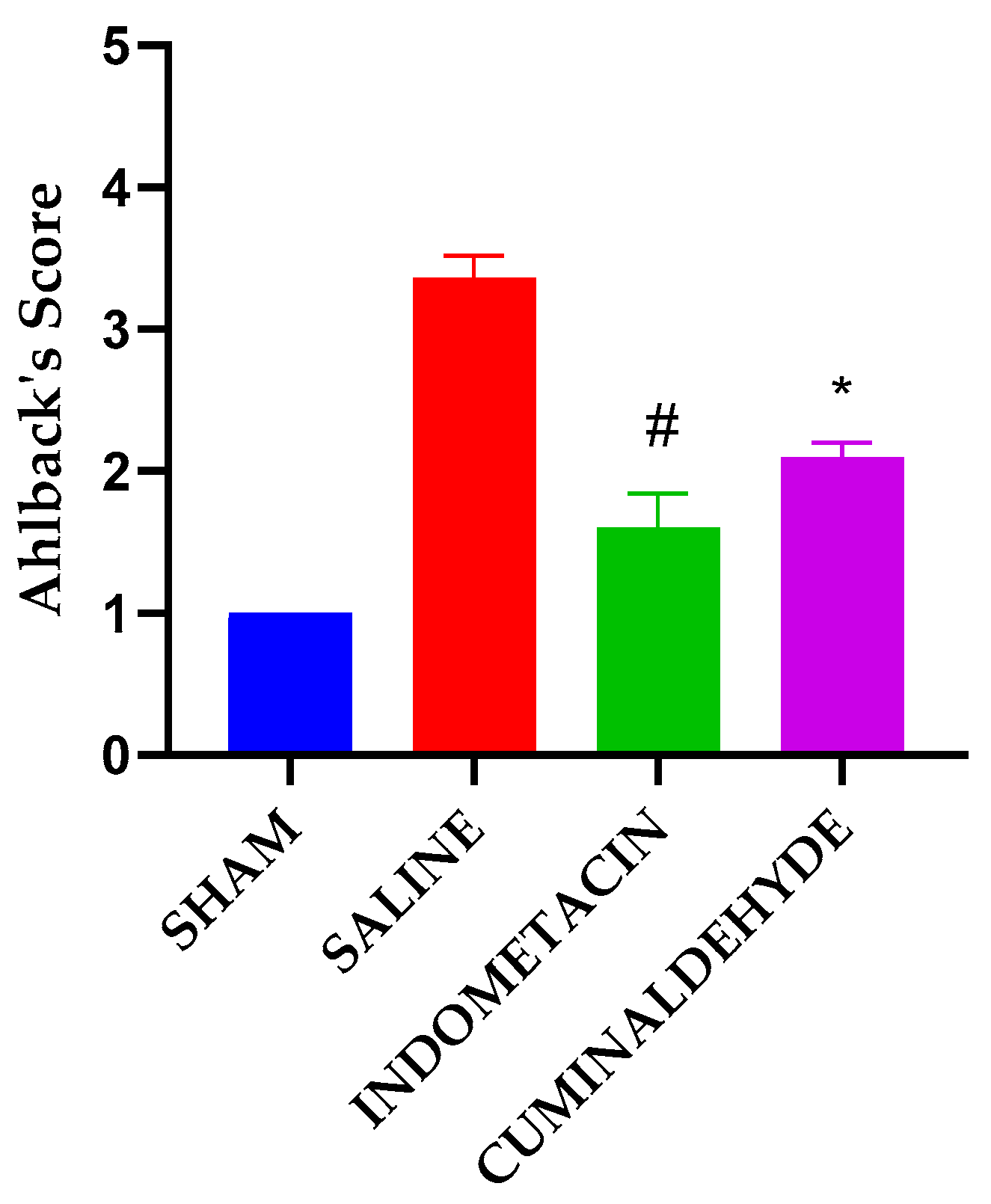

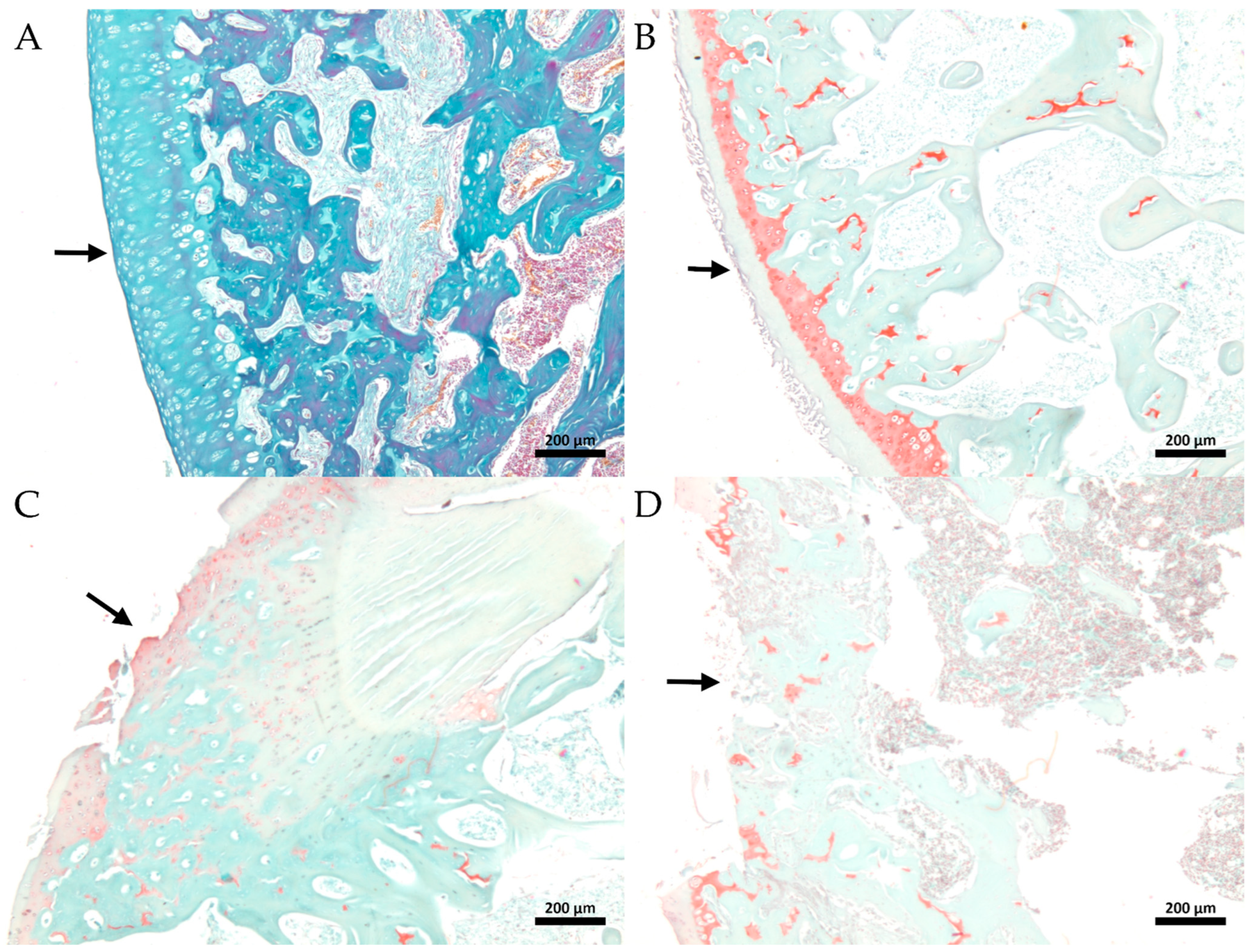

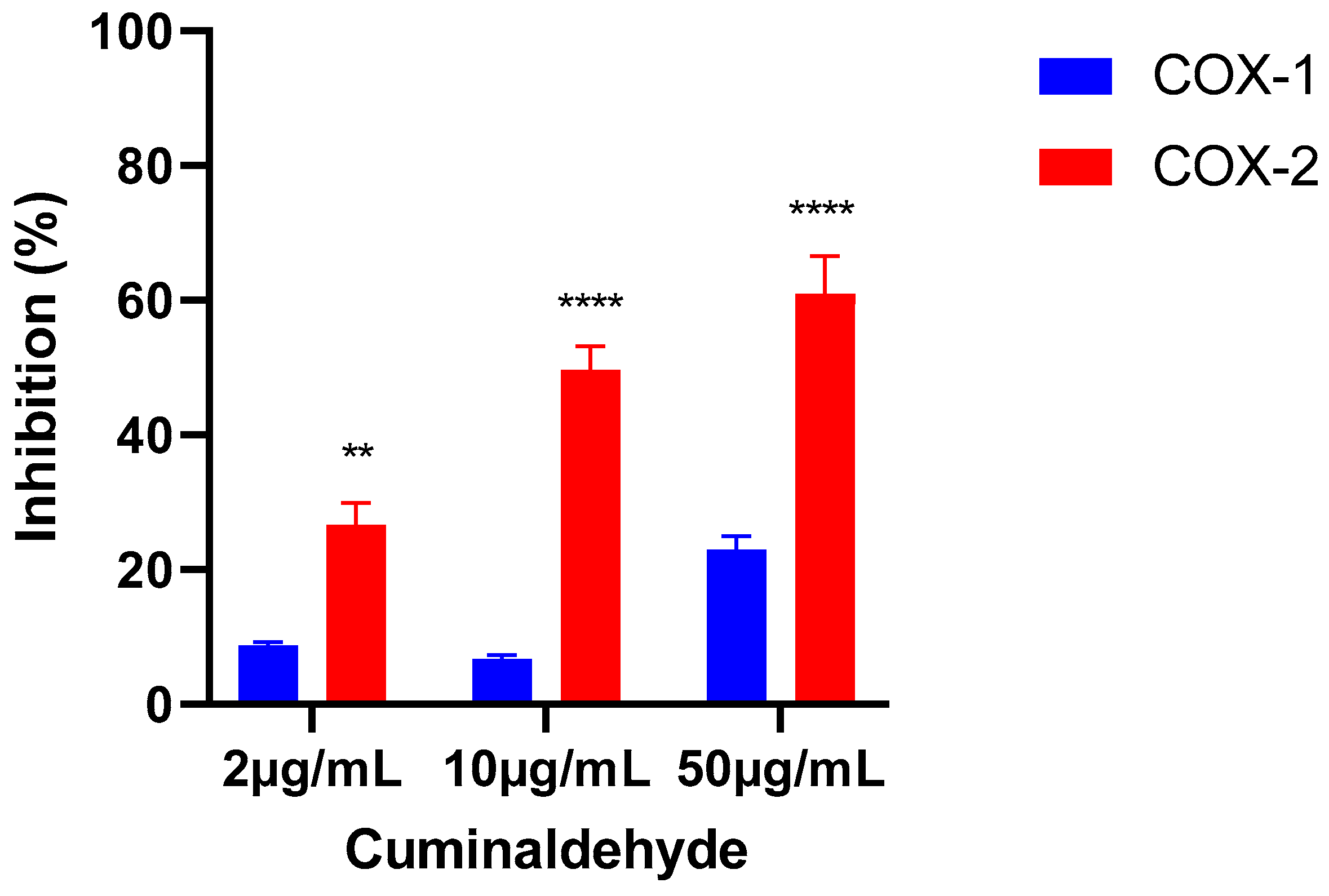
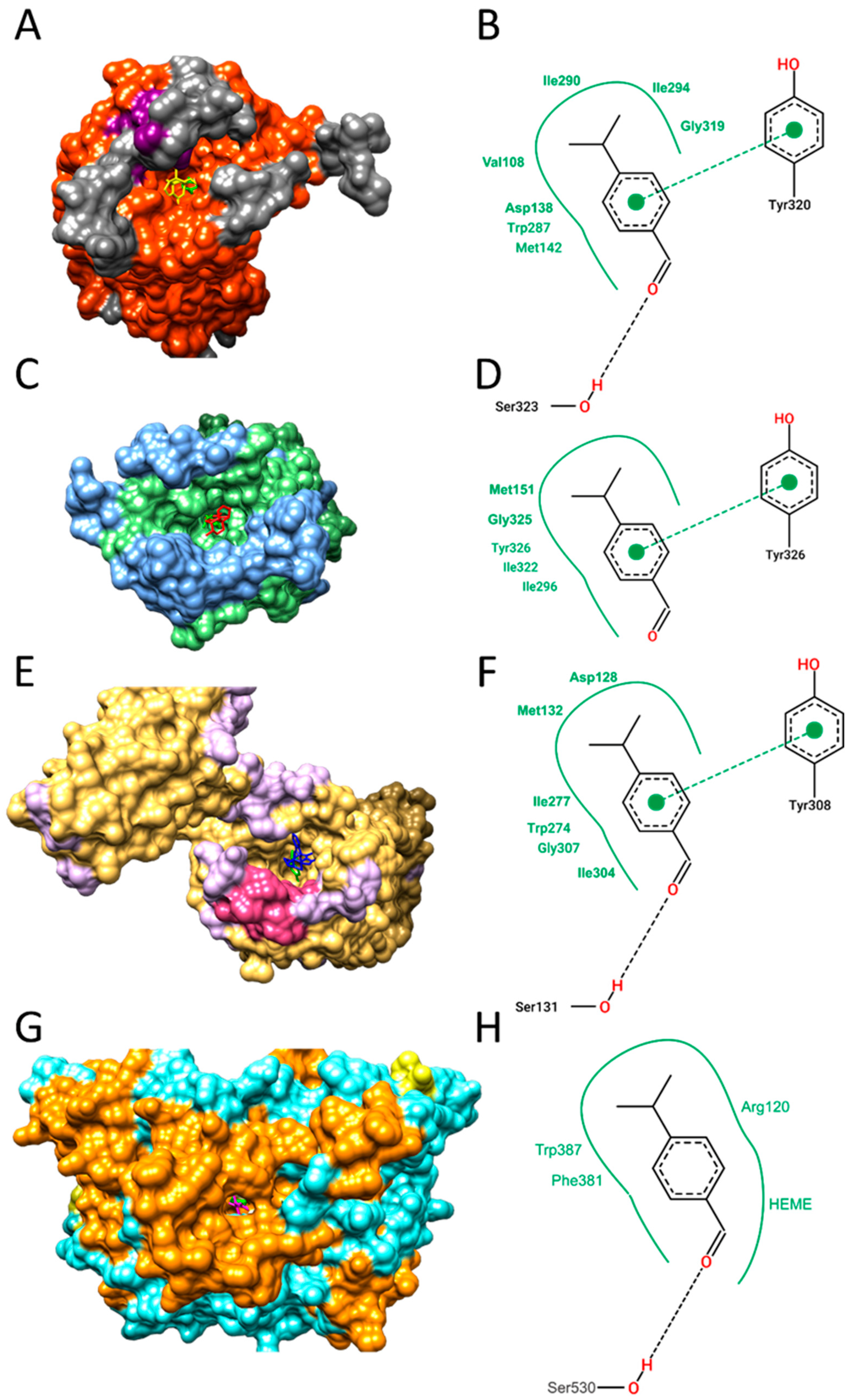
| Target/ΔGbind (kcal/mol) | ||||
|---|---|---|---|---|
| Ligand | kappa (κOR) (#6B73) | mu (µOR) (#6DDF) | delta (δOR) (#6PT3) | COX-2 (#1DDX) |
| Cuminaldehyde | −6.80 | −5.60 | −6.71 | −7.2 |
| Morphine | - | −8.0 | - | - |
| JDTic | −10.70 | - | - | - |
| CVV | −11.80 | - | - | - |
| Naltrindole | - | - | −12.00 | - |
| Indometacin | - | - | - | −8.1 |
Disclaimer/Publisher’s Note: The statements, opinions and data contained in all publications are solely those of the individual author(s) and contributor(s) and not of MDPI and/or the editor(s). MDPI and/or the editor(s) disclaim responsibility for any injury to people or property resulting from any ideas, methods, instructions or products referred to in the content. |
© 2023 by the authors. Licensee MDPI, Basel, Switzerland. This article is an open access article distributed under the terms and conditions of the Creative Commons Attribution (CC BY) license (https://creativecommons.org/licenses/by/4.0/).
Share and Cite
Morais, S.V.d.; Mendonça, P.G.; Vasconcelos, C.C.; Lopes, P.L.A.; Garcia, J.B.S.; Calzerra, N.T.M.; Queiroz, T.M.d.; Lima, S.T.d.J.R.M.; Silva, G.E.B.; Lopes, A.J.O.; et al. Cuminaldehyde Effects in a MIA-Induced Experimental Model Osteoarthritis in Rat Knees. Metabolites 2023, 13, 397. https://doi.org/10.3390/metabo13030397
Morais SVd, Mendonça PG, Vasconcelos CC, Lopes PLA, Garcia JBS, Calzerra NTM, Queiroz TMd, Lima STdJRM, Silva GEB, Lopes AJO, et al. Cuminaldehyde Effects in a MIA-Induced Experimental Model Osteoarthritis in Rat Knees. Metabolites. 2023; 13(3):397. https://doi.org/10.3390/metabo13030397
Chicago/Turabian StyleMorais, Sebastião Vieira de, Priscylla Gouveia Mendonça, Cleydlenne Costa Vasconcelos, Paloma Larissa Arruda Lopes, João Batista Santos Garcia, Natalia Tabosa Machado Calzerra, Thyago Moreira de Queiroz, Silvia Tereza de Jesus Rodrigues Moreira Lima, Gyl Eanes Barros Silva, Alberto Jorge Oliveira Lopes, and et al. 2023. "Cuminaldehyde Effects in a MIA-Induced Experimental Model Osteoarthritis in Rat Knees" Metabolites 13, no. 3: 397. https://doi.org/10.3390/metabo13030397
APA StyleMorais, S. V. d., Mendonça, P. G., Vasconcelos, C. C., Lopes, P. L. A., Garcia, J. B. S., Calzerra, N. T. M., Queiroz, T. M. d., Lima, S. T. d. J. R. M., Silva, G. E. B., Lopes, A. J. O., Cartágenes, M. d. S. d. S., & Domingues, G. R. d. S. (2023). Cuminaldehyde Effects in a MIA-Induced Experimental Model Osteoarthritis in Rat Knees. Metabolites, 13(3), 397. https://doi.org/10.3390/metabo13030397








